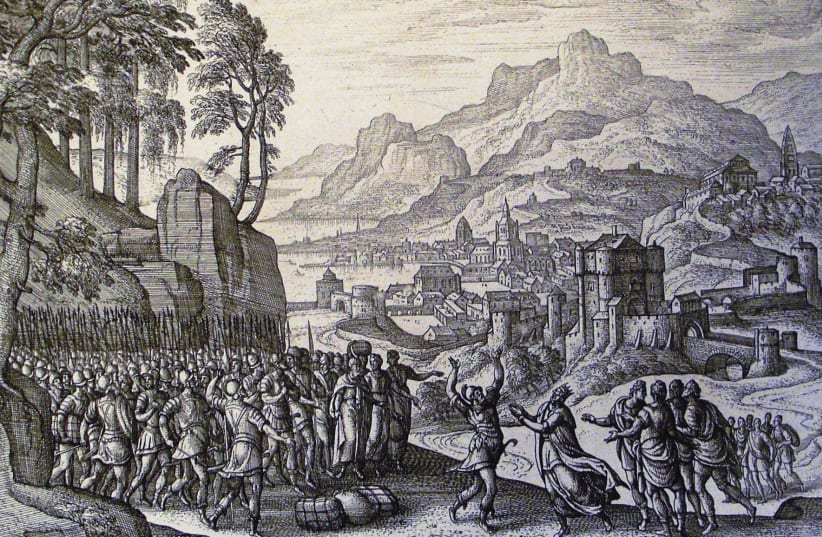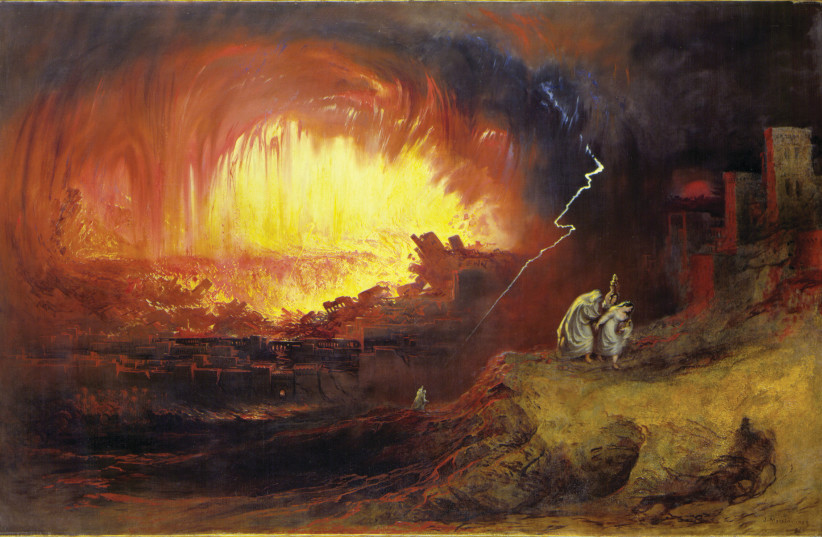People worry about the demise of the printed word, yet books about the “book of books,” the Bible, still appear in Israel and abroad with surprising frequency. Not all are of the highest quality. Many have debatable agendas. Some just rehash earlier works. But a few make serious and novel contributions to our understanding of the Bible.
Prof. Jonathan Grossman’s most recent English book, Abraham: The Story of a Journey, is one. A talented and prolific writer, Grossman, of Bar-Ilan University, builds upon pre-modern Jewish commentaries and contemporary Bible scholarship – in Hebrew, English, and German – adding his own insights. Most of his books are in Hebrew, but English readers are fortunate that this and a few others have been translated into English.
The Abraham volume appeared in Hebrew in 2014, the first in a series of three books about significant characters in Genesis. (The others were about Jacob and Joseph.) In an average Hebrew Bible without commentaries, the story of Abraham takes up fewer than 20 pages. Grossman’s rich literary analysis (with less emphasis on history) is almost 500 pages long.
A literary reading of the story of Sodom
Grossman divides Genesis chapters 11 to 25 into 15 units, revealing the structure of a chiasm (an “x”): the second group, units nine to 15, parallels the first group, units one to seven, but in reverse order. Unit one parallels unit 15; unit two parallels unit 14, etc. Literary scholars point out that this structure draws the reader’s attention to the middle, the one unmatched point of the chiasm, in this case, unit eight. In Grossman’s division, that unit is composed of Genesis chapter 17, where Abram’s name is changed to Abraham.
Here’s an example of one of Grossman’s paired units: The two stories of the rescue of Abram/Abraham’s nephew, Lot, parallel each other (unit five and its mate unit 11 in Grossman’s chiasm). In unit five, Lot is taken captive, together with other inhabitants of Sodom, during a war (Genesis 14:11-12) and needs to be rescued. In unit 11, Lot is saved at the last moment (Genesis 19:16) from the destruction of Sodom.
The parallels are clear: In both these stories, Lot gets into trouble because of his decision to live in proximity to Sodom. The Bible had prepared us in advance that this decision might be problematic (Genesis 13:12-13): “Lot settled in the cities of the plain, pitching his tent near Sodom. Now the inhabitants of Sodom were very wicked sinners against the Lord.”
In the stories, Lot was saved in two very different ways. In unit five, Abram musters troops, is victorious in battle against four strong kings, and saves Lot (Genesis 14:16). The narrative never says directly that God helped Abram. In fact, God is not mentioned in the chapter until the battles are over and King Melchizedek of Shalem declares (Genesis 14:19-20), “Blessed be Abram... and blessed be God Most High who has delivered your foes into your hand.”
IN UNIT 11, on the other hand, Lot is miraculously saved by messengers sent by God. We might infer from the text that Abraham’s close relationship with God was responsible for God’s intervention, but the Bible never mentions Abraham’s name in chapter 19 until Sodom is destroyed and Lot has escaped.
Only then, after a brief mention that, from a distance, Abraham saw Sodom going up in smoke (Genesis 19:27-28), a summary statement (Genesis 19:29) reads: “Thus it was that, when God destroyed the cities of the plain and annihilated the cities where Lot dwelt, God was mindful of Abraham and removed Lot from the midst of the upheaval.”
Grossman argues that this pattern – where the second story of the “pair” shows more direct involvement by God – is applicable to all seven pairs of stories in the chiasm. In general, “the first part of the cycle [the texts I labeled one to seven] describes Abram’s acceptance of God’s authority, while the second part [the texts I labeled nine to 15] portrays the close interactions between God and Abraham... God becomes more heavily involved.” This shift takes place at the midpoint, in unit eight, when Abram accepts the covenant of circumcision and becomes Abraham.
Grossman’s works are filled with insightful readings like this. I have made constant use of his Hebrew volumes in my teaching. The English volume on Abraham is a solid translation, in clear, accessible language. It is of value to both Bible students and teachers.
In some circles, literary readings of the Bible are seen as controversial, as they allegedly treat the Bible “just” as a piece of literature and not as a source of religious values. As you can see, the dichotomy is false. Good literary analysis can enhance the Bible’s message about God and human beings.
Let’s hope that more of Grossman’s works are translated into English and made available to wide audiences.
ABRAHAM: THE STORY OF A JOURNEYBy Jonathan GrossmanMaggid Books544 pages; $29.95

